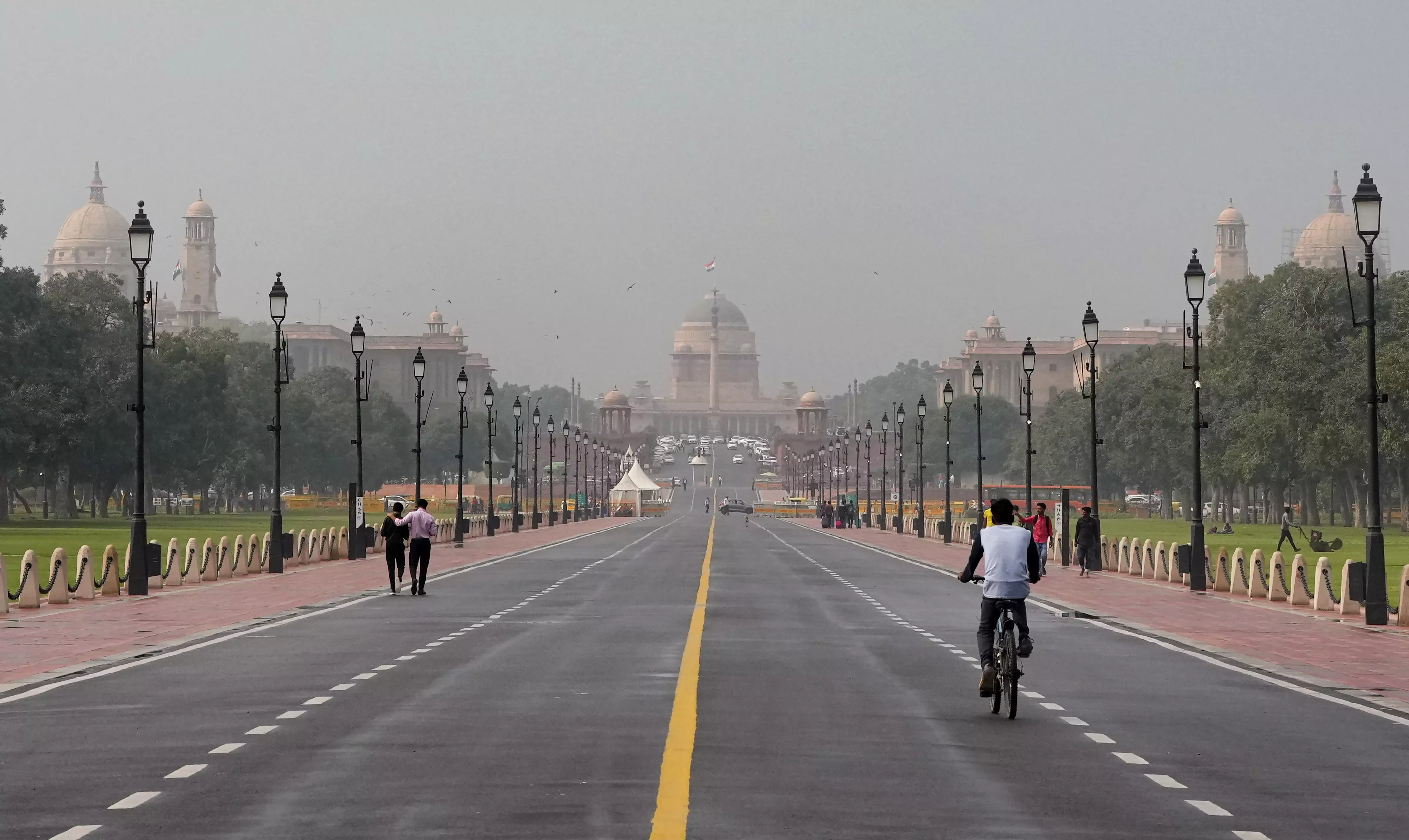
Delhiites wake up to clear skies as firecracker ban pulls back AQI to 202
The national capital may see best Diwali day air quality in eight years if the firecracker ban works through the day

A stringent enforcement of the ban on firecrackers holds the promise of delivering the best air quality on Diwali day in eight years for Delhi on Sunday (November 12).
Delhiites woke up to clear skies and abundant sunshine, and the city's Air Quality Index (AQI) stood at 202 at 7 am, the best in at least three weeks.
An AQI between zero and 50 is considered 'good', 51 and 100 'satisfactory', 101 and 200 'moderate', 201 and 300 'poor', 301 and 400 'very poor', 401 and 450 'severe' and above 450 'severe plus'.
Saturday's 24-hour average air quality index stood at 220, the lowest for the day before Diwali in eight years. This time, Delhi saw a sharp improvement in air quality just ahead of Diwali which can be attributed to intermittent rainfall on Friday and wind speed favourable for the dispersion of pollutants.
To put this in perspective, Thursday's 24-hour average AQI stood at 437. Delhi recorded an AQI of 312 on Diwali last year, 382 in 2021, 414 in 2020, 337 in 2019, 281 in 2018, 319 in 2017, and 431 in 2016, according to the Central Pollution Control Board data.
The city experienced "very poor" to "severe" air quality for two weeks starting October 28 and a suffocating haze lingered over the capital during this period. The IMD had earlier predicted a marginal improvement in the air quality just ahead of Diwali, owing to favourable meteorological conditions, including light rain, under the influence of a western disturbance. A western disturbance led to rains over most parts of northwest India, including Punjab and Haryana, effectively reducing the contribution of smoke from stubble burning to Delhi's air pollution.
Once the western disturbance passes, the wind speed will increase to around 15 km per hour on November 11 (Saturday) which will help disperse pollutants ahead of Diwali (November 12), an IMD official said earlier.
Risks ahead
In accordance with the practice of the last three years, Delhi has announced a comprehensive ban on the manufacture, storage, sale, and use of firecrackers within the capital city. However, sporadic incidents of firecracker burning were reported on Saturday night in several parts of the capital. Low temperatures and firecracker burning could lead to a rise in pollution levels in Delhi on Sunday night. Last year, a decrease in stubble-burning incidents, delayed spells of rain, favourable meteorological conditions, and an early Diwali prevented the national capital from turning into a gas chamber following the festival of lights.
According to data from the Decision Support System, a numerical model-based framework capable of identifying the sources of particulate matter pollution in Delhi, stubble burning in the neighbouring states, particularly Punjab and Haryana, accounted for 23 per cent of the air pollution in the city on Wednesday. It was 33 per cent on Thursday and 10 per cent on Friday. The data also shows that transport is another major factor, contributing 12 to 14 per cent to Delhi's foul air.
Vinay Kumar Sehgal, principal scientist at the New Delhi-based Indian Agricultural Research Institute, anticipated a reduction in farm fires in Punjab and Haryana around Diwali due to wet conditions following rainfall.
Odd-even postponed
On Friday, Delhi Environment Minister Gopal Rai said the government has postponed the implementation of the odd-even car rationing scheme as there has been a notable improvement in the city's air quality due to the rain. He said the government will review the air quality situation after Diwali and a call on the 'odd-even' scheme may be taken if there's a sharp increase in pollution levels.
Rai had earlier said the scheme would be implemented in the city after the Supreme Court reviewed its effectiveness and issued an order. On Tuesday, the apex court questioned the effectiveness of the Delhi government's car-rationing scheme, aimed at curbing vehicular pollution, and referred to it as "all optics".
Anticipating further deterioration of the air quality post-Diwali, Rai on Monday announced that the scheme, which permits cars to operate on alternate days based on the odd or even last digit of their registration numbers, would be enforced between November 13 and 20.
Doctors say breathing in the polluted air of Delhi is equivalent to the harmful effects of smoking approximately 10 cigarettes a day. Prolonged exposure to high levels of pollution can cause or exacerbate respiratory problems such as asthma, bronchitis and chronic obstructive pulmonary disease (COPD) and dramatically raise the risk of cardiovascular disease, they said.
Stringent restrictions mandated under the final stage of the Centre's air pollution control plan for Delhi-NCR – the Graded Response Action Plan (GRAP) – have also been implemented in the national capital. The restrictions under stage IV of the GRAP, including a ban on all kinds of construction work and the entry of polluting trucks into Delhi, took effect on Sunday after the air quality in the city dropped to 'severe plus' (AQI above 450) levels. GRAP categorises actions into four stages: Stage I – Poor (AQI 201-300); Stage II – Very Poor (AQI 301-400); Stage III – Severe (AQI 401-450) and Stage IV – Severe Plus (AQI above 450).
(With inputs from agencies)

